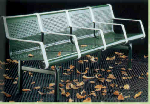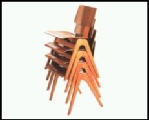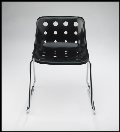12th November 2010














v37
Robin & Lucienne Day have been amongst the leading designers since the 1950’s - both having been involved in the ‘Festival of Britain’ in London. This polypropylene chair was designed in 1963 by Robin Day and consisted of a single shell seat that clipped firmly to a tubular steel frame. It was cheap and easy
to manufacture and became a major success - changing the expectations of chair design and comfort. Public offices and private companies bought them in large numbers, not only because of their cheapness but because of the ‘stackability’ that had been incorporated into the design. London transport and the rail network uses another of Robin’s designs dating from 1995; this time using perforated steel.
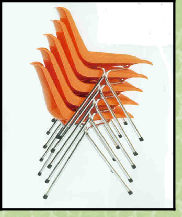

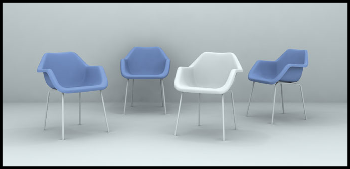
“There's this very vulnerable planet of ours with finite resources. Architects and designers have,
I think, a fair responsibility for conserving energy and materials, and making things durable.”
Robin Day
I think, a fair responsibility for conserving energy and materials, and making things durable.”
Robin Day
Lucienne Day’s textile designs were featured at the Festival of Britain with the example shown here (left) being one of her best known. It was titled ‘Calyx’ and was awarded an international design award from the American Institute of Decorators. Her textiles have been commissioned by a wide range of companies and used in carpet, wallpaper, ceramic and fabric/furnishing designs.
In the immediate post war years there were fewer restrictions on clothing than on furnishings and interior designs and she consequently worked more in this area than any other. Continuing with textile designs throughout the 1950s, 60s, 70s and 80s, Lucienne produced many designs for Heal’s in London.
Published in 2001 it chronicles the development of their careers.
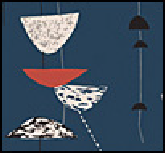
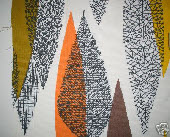
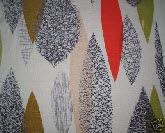
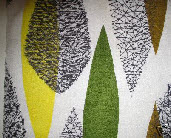

~ Design & Technology ~
Designers and Designing
Designers and Designing
Robin & Lucienne met at the Royal College of Art
in London and have remained the most well known design couple with distinct success in their own individual special isms.
in London and have remained the most well known design couple with distinct success in their own individual special isms.
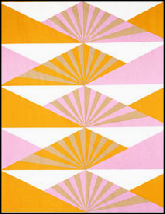
1969 ~ Sunrise
1951 ~ Calyx
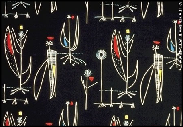
1956 ~ Herb Antony fabric





